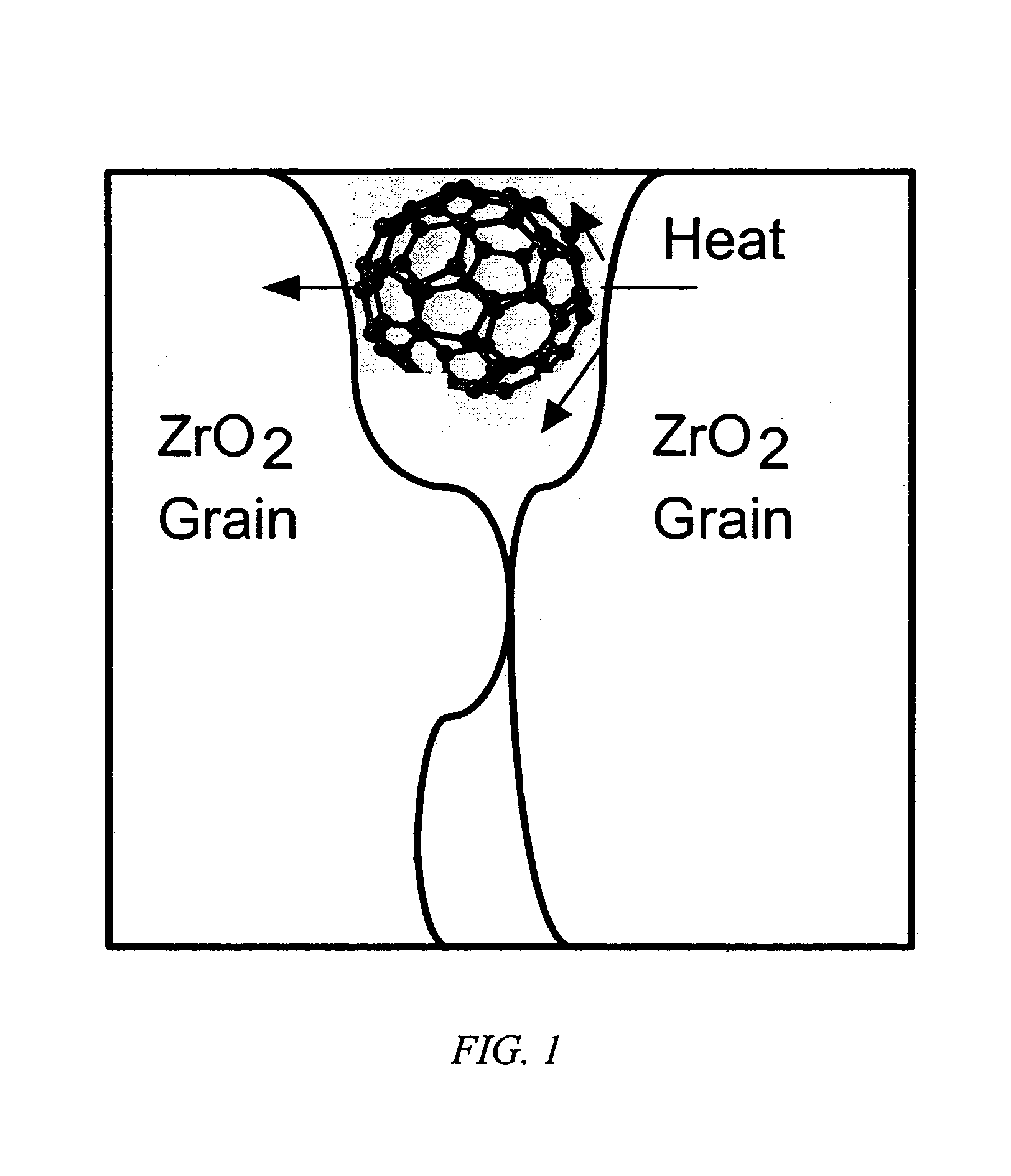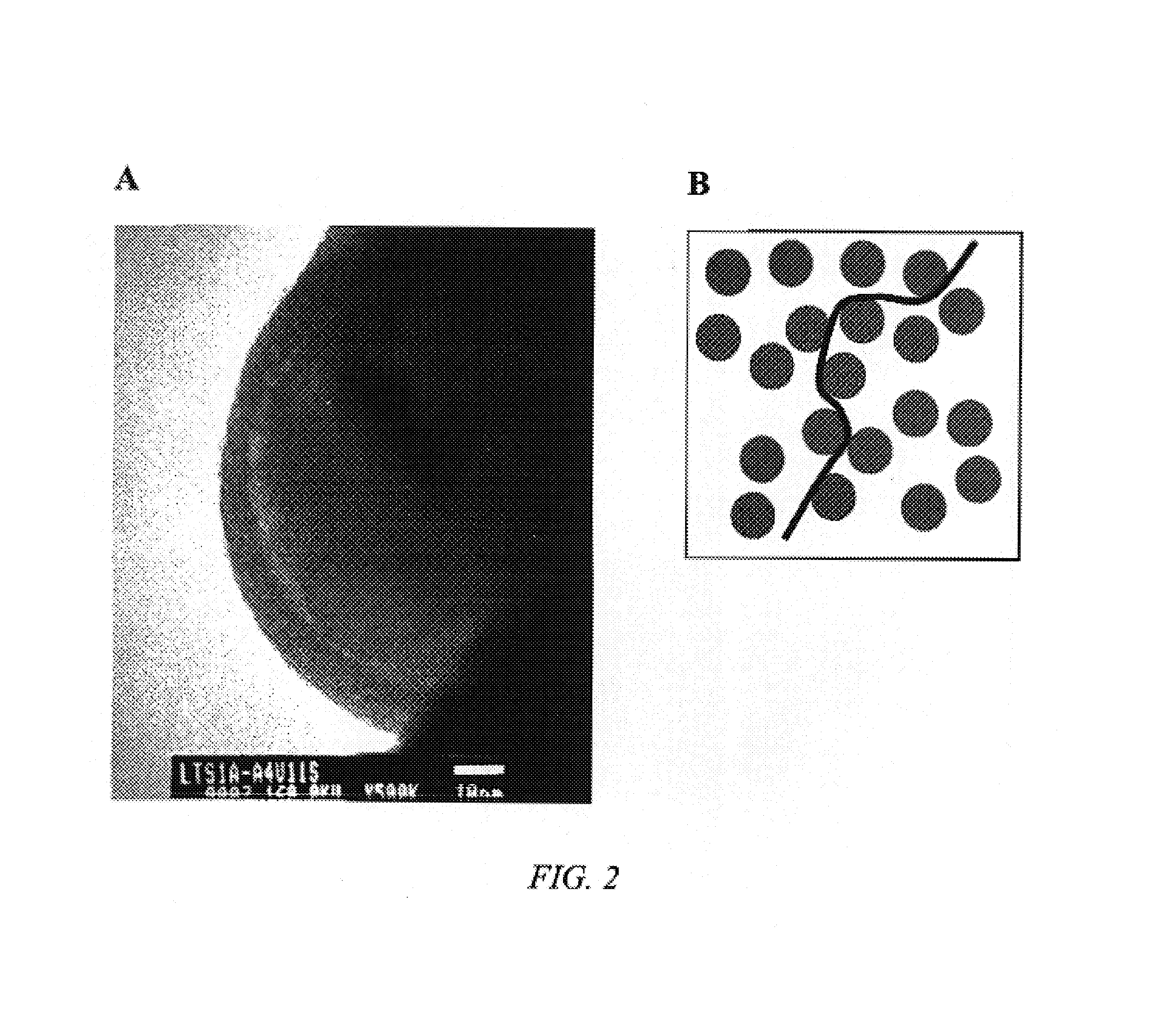Fabrication of reinforced composite material comprising carbon nanotubes, fullerenes, and vapor-grown carbon fibers for thermal barrier materials, structural ceramics, and multifunctional nanocomposite ceramics
a technology of carbon nanotubes and composite materials, which is applied in the field of materials science, high-performance materials, ceramic composites, carbon nanotubes, etc., can solve the problems of insufficient prior art which discloses putting fullerene materials, and the inherently brittleness of ceramics, so as to reduce the thermal conductivity of the ceramic host, reduce the thermal conductivity, and the effect of increasing structural integrity
- Summary
- Abstract
- Description
- Claims
- Application Information
AI Technical Summary
Benefits of technology
Problems solved by technology
Method used
Image
Examples
example 1
Robocasting of VGCF and SWNT Ceramic Composites
[0070]The successful robocasting of any part is directly related to slurry characteristics. This example, therefore, focuses on the process optimization of the composite slurries in order to successfully robocast solid parts. Developing a slurry for robocasting is highly dependent upon experience with colloidal processing of aqueous ceramic suspensions near the dilatant regime. The slurry processing window is very small and expert judgement must be exerted when identifying the appropriate slurry conditions for robocasting. During the development of a robocastable slurry, changes through Newtonian, pseudoplastic and dilatant slurries can easily be observed but identifying the robocasting slurry conditions, just bordering dilatancy, takes practice. Although robocasting technology has already proven to be widely applicable to many ceramic systems (Cesarano et al.) the area of ceramic nanocomposite processing has yet to be explored.
[0071]In...
example 2
Tape-Casting Composites of Partially Stabilized Zirconia with SWNTs and VGCFs
[0076]The following procedure is used to produce a homogeneous, partially-stabilized-zirconia (PSZ) tape. Based on a final 100 g slip, the solvent (31 g) consists of a mixture (80 / 20 by weight) of toluene and ethanol. The dispersant (2 g) is a 50 / 50 mixture of solvent and Manhedan Fish Oil (Tape Cast Warehouse (TCW)) which was added and mixed with the solvent along with equal amounts (2.5 g) of the plasticizers, polyethylene glycol 400 (Alfa) and butyl benzyl phthalate (TCW). To this liquid, 58 g of PSZ powder was added slowly while stirring intermittently. Partially stabilized zirconia (HSY3.0, American Vermiculite) with 3.0 mol. % Y2O3 and an average particle size of 0.41 microns was selected for this experiment. Spherical zirconia milling media were added to the container, and the slurry was ball milled for approximately five hours. An appropriate amount (appropriate to the desired amount in the final pr...
PUM
| Property | Measurement | Unit |
|---|---|---|
| porosity | aaaaa | aaaaa |
| porosity | aaaaa | aaaaa |
| porosity | aaaaa | aaaaa |
Abstract
Description
Claims
Application Information
 Login to View More
Login to View More - R&D
- Intellectual Property
- Life Sciences
- Materials
- Tech Scout
- Unparalleled Data Quality
- Higher Quality Content
- 60% Fewer Hallucinations
Browse by: Latest US Patents, China's latest patents, Technical Efficacy Thesaurus, Application Domain, Technology Topic, Popular Technical Reports.
© 2025 PatSnap. All rights reserved.Legal|Privacy policy|Modern Slavery Act Transparency Statement|Sitemap|About US| Contact US: help@patsnap.com



